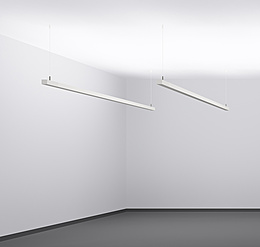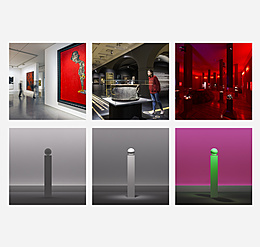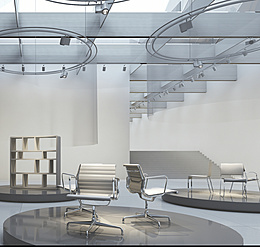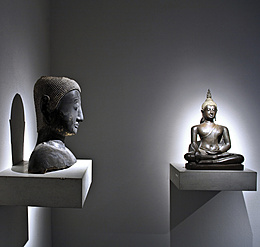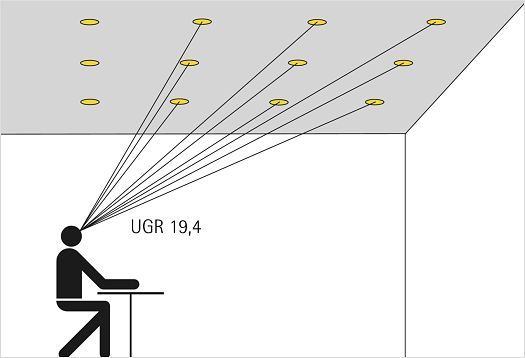
UGR stands for ‘Unified Glare Rating’ and is a method for assessing the glare effect of indoor lighting systems. It evaluates ‘psychological’, i.e. disturbing glare, but where there is no reduction in visual performance. The calculation method only provides meaningful results for mainly direct distribution luminaires. It only takes into account direct glare from luminaires, but not reflected glare caused by reflections on surfaces.



